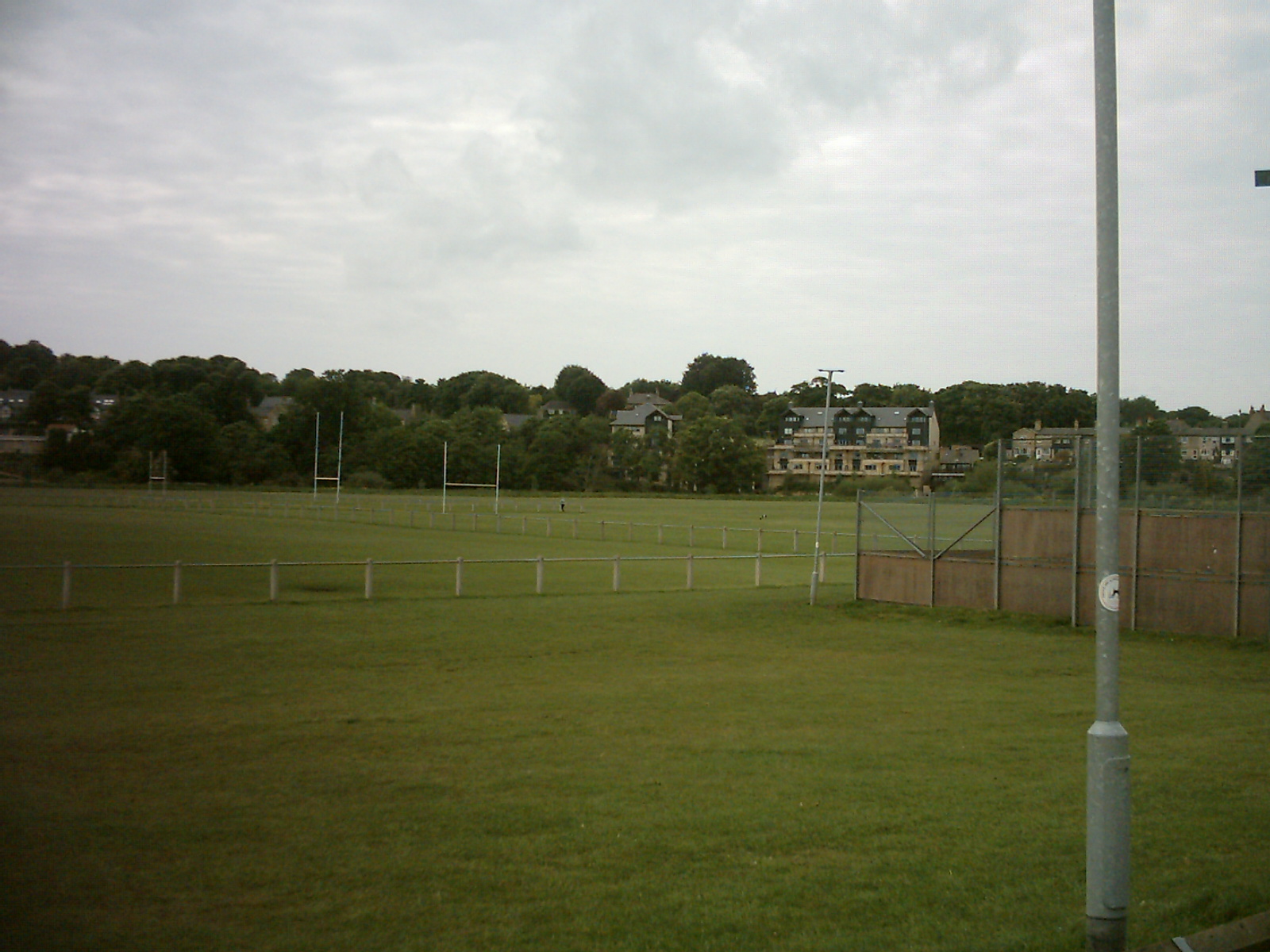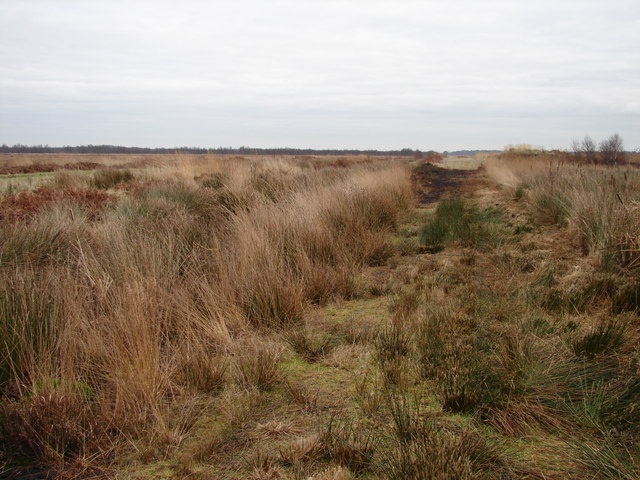|
Ryther Cum Ossendyke
Ryther cum Ossendyke is a civil parish from Tadcaster and from Selby, North Yorkshire, England. It includes the village of Ryther. The civil parish population at the 2011 census was 241. History Ryther-with-Ossendyke is a parish in the wapentake of Barkston Ash historically in Yorkshire but now in the county of North Yorkshire. The parish is situated on the south side of the River Wharfe, which forms part of the parish boundary. It covered 1,074 hectares and contained the township of Lead Hall about six miles to the west, where there is St Mary's Chapel, a chapel of ease of Ryther's parish church, All Saints Church (13th century). The origin of the village name 'Ryther' is uncertain. Eilert Ekwall, in the ''Concise Oxford Dictionary of English Place-Names'', rejected an earlier derivation from a putative Old English word ''gytheru'' ('clearing'); he instead proposed ''hryther-ea'', 'cattle-isle'. However, more modern scholarship has argued that an unrecorded Old English ''r ... [...More Info...] [...Related Items...] OR: [Wikipedia] [Google] [Baidu] |
United Kingdom Census 2011
A Census in the United Kingdom, census of the population of the United Kingdom is taken every ten years. The 2011 census was held in all countries of the UK on 27 March 2011. It was the first UK census which could be completed online via the Internet. The Office for National Statistics (ONS) is responsible for the census in England and Wales, the General Register Office for Scotland (GROS) is responsible for the census in Scotland, and the Northern Ireland Statistics and Research Agency (NISRA) is responsible for the census in Northern Ireland. The Office for National Statistics is the executive office of the UK Statistics Authority, a non-ministerial department formed in 2008 and which reports directly to Parliament. ONS is the UK Government's single largest statistical producer of independent statistics on the UK's economy and society, used to assist the planning and allocation of resources, policy-making and decision-making. ONS designs, manages and runs the census in England an ... [...More Info...] [...Related Items...] OR: [Wikipedia] [Google] [Baidu] |
Effigy
An effigy is an often life-size sculptural representation of a specific person, or a prototypical figure. The term is mostly used for the makeshift dummies used for symbolic punishment in political protests and for the figures burned in certain traditions around New Year, Carnival and Easter. In European cultures, effigies were in the past also used for punishment in formal justice, when the perpetrator could not be apprehended, and in popular justice practices of social shaming and exclusion. Additionally, "effigy" is used for certain traditional forms of sculpture, namely tomb effigies, funeral effigies and coin effigies. There is a large overlap and exchange between the ephemeral forms of effigies. Traditional holiday effigies are often politically charged, for instance, when the generalised figures Año Viejo (the Old Year) or Burning of Judas, Judas in Latin America are substituted by the effigy of a despised politician. Traditional forms are also borrowed for political p ... [...More Info...] [...Related Items...] OR: [Wikipedia] [Google] [Baidu] |
Church Fenton
Church Fenton or Kirk Fenton is a village and civil parish in the Selby District of North Yorkshire, England. It is about east of Leeds, about south-east from Tadcaster and north from Sherburn in Elmet. Neighbouring villages include Barkston Ash, Cawood and Ulleskelf. The former RAF Church Fenton is located immediately north-east, which is now known as Leeds East Airport. History The name 'Church Fenton' means a village with a church in fen or marshland. The village was recorded along with nearby Little Fenton as ''Fentun'' in the ''Domesday Book'' of 1086, with no mention of a church. However in 1338 the establishment of church was signified by the name Kirk Fenton. The two names have been variously used to describe either the village or a parish including the hamlets of Little Fenton to the south and Biggin to the south-east. The area was agricultural with some quarry work until the arrival of the Leeds and Selby Railway in 1839, resulting in the development of local ind ... [...More Info...] [...Related Items...] OR: [Wikipedia] [Google] [Baidu] |
Cawood Railway Station
Cawood was the northern terminus of the short Cawood, Wistow and Selby Light Railway (CW&SLR), in rural North Yorkshire, England. The line was connected to the North Eastern Railway (NER) at its southern end. The station buildings The line originally had three stations, , and Cawood. The Brayton Gates terminus was temporary and probably wooden. It closed in 1904 when trains were diverted to the NER's main station. Cawood's and Wistow's permanent, brick-built station buildings were similar, but clearly differed from the NER's typical rural station. The main difference between the two was that Wistow station building stood alongside the platform, parallel to the track, whilst the Cawood building stood at right angles to it. In 1899 the company obtained parliamentary approval to build an extension to Church Fenton; this never happened, but had it done so the Cawood station building would have had to be demolished or bypassed. Cawood station's passenger provision was unexceptio ... [...More Info...] [...Related Items...] OR: [Wikipedia] [Google] [Baidu] |
Cawood, Wistow And Selby Light Railway
The Cawood, Wistow and Selby Light Railway (CW&SLR) was a short light railway in a rural part of Yorkshire, England. The company was sometimes referred to as the Cawood, Wistow and Selby Railway. Precursor line An Act of Parliament in 1879 allowed the construction of the ''Church Fenton, Cawood and Wistow Railway'' from a junction at Church Fenton through Cawood to Wistow. Further Acts were passed authorising an extension to Selby and a junction line to the Hull and Barnsley Railway (HBR) at Drax. In the event, the necessary capital could not be raised, so neither the extensions nor the original line were built. History In the 1890s the ''Cawood, Wistow and Selby Light Railway Company'' (CW&SLR) was formed at the initiative of light railway entrepreneur Sebastian Meyer, acting with a group of men of influence in the region. The North Eastern Railway (NER) gave "generous assistance", which appears to have amounted to moral support, advice and lack of opposition, but no cas ... [...More Info...] [...Related Items...] OR: [Wikipedia] [Google] [Baidu] |
Ulleskelf Railway Station
Ulleskelf railway station serves Ulleskelf in North Yorkshire, England. The station is south of York. History The station opened on 29 May 1839 on the York and North Midland Railway near where it crossed the River Wharfe. The station appears to have been subsequently redesigned and slightly relocated following the construction of the bridge carrying New Road (the B1223) over the tracks: the 1849 Ordnance Survey map (which predates the bridge) implies that the first station building was either adjacent to, and at right angles to, the Ulleskelf Arms public house, or directly across the track from the pub on West End Road. Neither of these two candidate buildings survives. The map drawn from the 1888 survey shows the station in its current position on the south side of the new road bridge, with a new access road from the east end of the bridge across Hall Garth to the junction of Main Street and a newly-extended Church Fenton Lane. This map shows the station alongside a goods ya ... [...More Info...] [...Related Items...] OR: [Wikipedia] [Google] [Baidu] |
East Coast Main Line
The East Coast Main Line (ECML) is a electrified railway between London and Edinburgh via Peterborough, Doncaster, York, Darlington, Durham and Newcastle. The line is a key transport artery on the eastern side of Great Britain running broadly parallel to the A1 road. The line was built during the 1840s by three railway companies, the North British Railway, the North Eastern Railway, and the Great Northern Railway. In 1923, the Railway Act of 1921 led to their amalgamation to form the London and North Eastern Railway (LNER) and the line became its primary route. The LNER competed with the London, Midland and Scottish Railway (LMS) for long-distance passenger traffic between London and Scotland. The LNER's chief engineer Sir Nigel Gresley designed iconic Pacific steam locomotives, including '' Flying Scotsman'' and '' Mallard'' which achieved a world record speed for a steam locomotive, on the Grantham-to-Peterborough section. In 1948, the railways were nationalise ... [...More Info...] [...Related Items...] OR: [Wikipedia] [Google] [Baidu] |
Selby Diversion
The Selby Diversion is a mainline railway in the United Kingdom, built as a new part of the East Coast Main Line (ECML) to avoid an area of potential subsidence over the newly discovered Selby Coalfield. The line opened in 1983, running roughly northwest from a junction on the ECML near Temple Hirst, south of Selby, to a junction near Church Fenton, south of York. As of 2015, the line is used primarily by long-distance north–south services, as well as some freight trains. Most freight trains have been diverted from the line by the opening of the North Doncaster Chord Project which was completed in June 2014. Description From the northern end, the line runs off a junction with the southwesterly former York and North Midland Railway mainline from York south to Church Fenton and Brotherton; the line turns south, crossing the River Wharfe. At the Leeds and Selby Line, the line travels under the east–west railway, with junctions allowing trains from York to continue east to S ... [...More Info...] [...Related Items...] OR: [Wikipedia] [Google] [Baidu] |
Ings
''Ings'' is an old word of Old English origin referring to water meadows and marshes. The term appears in place names in Yorkshire (such as Hall Ings, Bradford, Fairburn Ings RSPB reserve, Clifton Ings in York, Derwent Ings, Sutton Ings, Acaster South Ings, and Wetherby Ings), as well as in Cumbria, and in Lincolnshire. "Ings" may be of direct Old English origin or potentially borrowed into Old English from Old Norse. See also *Carr (landform) A carr is a type of waterlogged wooded terrain that, typically, represents a succession stage between the original reedy marsh and the likely eventual formation of forest in a sub-maritime climate.Whittow, John (1984). ''Dictionary of Physical Ge ... References External links {{authority control Wetlands of England English dialect words Humber ... [...More Info...] [...Related Items...] OR: [Wikipedia] [Google] [Baidu] |
River Ouse, Yorkshire
The River Ouse ( ) is a river in North Yorkshire, England. Hydrologically, the river is a continuation of the River Ure, and the combined length of the River Ure and River Ouse makes it, at , the sixth-longest river of the United Kingdom and (including the Ure) the longest to flow entirely in one county. The length of the Ouse alone is about but the total length of the river is disputed. It is a matter of opinion as to whether the River Ouse is formed at the confluence of the River Ure and the much-smaller Ouse Gill Beck at Cuddy Shaw Reach near Linton-on-Ouse, about six miles downstream of the confluence of the River Swale with the River Ure. An alternative opinion is recorded in a publication published in ''The Yorkshire Post'' in a series dated 1891, written and illustrated by Tom Bradley. His description and bird's-eye-view maps—specifically in his account of the River Swale—suggests that the River Ouse starts at the confluence of the Swale and the Ure. His narrative ... [...More Info...] [...Related Items...] OR: [Wikipedia] [Google] [Baidu] |
Humberhead Levels
The Humberhead Levels is a national character area covering a large expanse of flat, low-lying land towards the western end of the Humber estuary in northern England. The levels occupy the former Glacial Lake Humber, an area bounded to the east by the Yorkshire Wolds and the northern Lincolnshire Edge, a limestone escarpment, and to the west by the southern part of the Yorkshire magnesian limestone ridge. In the north the levels merge into the slightly more undulating Vale of York close to the Escrick glacial moraine, and to the south merge into the Trent Vale. Glacial Lake Humber During the last ice age, a glacier extended across this area almost to where Doncaster now is. The main glacial front was at Escrick where the Escrick moraine marks its furthest extension. This was the northern limit of an extensive lake which was impounded by the blocking of the Humber Gap by another ice front. The lake bottom gradually filled with clay sediments which are up to 20 metres thick. Th ... [...More Info...] [...Related Items...] OR: [Wikipedia] [Google] [Baidu] |
Thomas Corbett (Lincolnshire MP)
Thomas George Corbett (1796 - 1868) was an English Member of Parliament, and High Sherriff of Lincolnshire in 1840. Background Thomas Corbett was the son of William Corbett (died 1832) of Darnhall and his wife Jane Eleanor, daughter of George Ainslie (British Army officer, died 1804). His mother's uncles included Colonel Sir Philip Ainslie of Pilton and Sir Robert Ainslie, 1st Baronet, MP and ambassador to the Ottoman Empire. In 1810 William Corbett changed his name to William Thompson Corbett, to inherit the Elsham estate from his mother's great-uncle Robert Thompson. Political career Corbett was elected in the 1835 United Kingdom general election and sat for two and a half years, until the 1837 election, triggered by the death of King William. He was a Conservative; he replaced the previous Tory candidate, Sir Robert Sheffield. His constituency was Lindsey, Lincolnshire, known then as the Parts of Lindsey (the northernmost of the three administrative divisions of Linc ... [...More Info...] [...Related Items...] OR: [Wikipedia] [Google] [Baidu] |







.jpg)